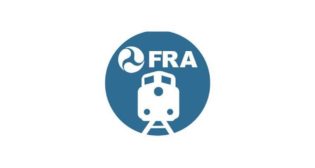
Three years ago today…
Written by David Thomas, Canadian Contributing EditorThree years ago today, the people of Lac-Mégantic could never have imagined this.
Contributing editor David Thomas, on the legacy of Lac-Mégantic:
In the early hours of July 13, a runaway oil train exploded in the then-idyllic lakeside town of Lac-Mégantic, Quebec, killing 47 people.
The investigation and ensuing cascade of regulatory measures severely disrupted the nascent crude-by-rail industry, caused federal authorities in Canada and the U.S. to condemn most of the continental tank car fleet, and turned the chattering classes against the railroads, amid a ruthless tarring by the petroleum lobby, for not “keeping the damn trains on the track.”
After all that, crude oil trains continue to derail and the oil continues to ignite and blow up; and the official investigation results still primarily target the railroads. The Federal Railroad Administration’s preliminary report on the June 3 explosion of four cars in Mosier, Ore., on the Union Pacific, cites sheared lag bolts and loose tieplates as the cause of the derailment.
As a trivial, background factoid, the FRA noted that the Mosier crude originated at Dakota Plains’ New Town terminal in North Dakota. The FRA did not mention that the doomed Lac-Mégantic train was loaded at that very same terminal, with crude oil fracked from the same Bakken oil formation.
Despite all of the regulatory agonizing, oil train explosions remain a clear and present danger, and not because of tieplates or tank cars.
The FRA reported that the four breached and burned cars were modern CPC-1232s (a standard the railroads voluntarily instituted in late 2011), upgraded with full-height head shields and insulated metal jackets. Such upgraded cars are approved for use by the FRA, which remarked in its report: “The tank cars involved in the derailment performed as expected in the incident based on tank car performance metrics.”
In other words, the new tank cars are expected to breach in a 25-mph derailment. In more other words, the entire mandated fleet renewal was a monster red herring that distracted attention from fixing the root cause of exploding oil trains: contaminated crude oil containing dangerous and entirely unnecessary concentrations of explosive gases.
The Bakken crude in the Oregon derailment had been conditioned, not stabilized. In December 2014, North Dakota established regulations requiring the pre-transport conditioning of crude oil, which stipulates that the oil’s Vapor Pressure Index (VPI) cannot exceed 13.7. It important to note that conditioning is far lower level of gas removal that mostly removes water and hydrogen sulphide. FRA reported that the VPI was 9.2, well below the North Dakota requirement.
As a result, the explosion was smaller than prior incidents, so the scope and depth of the damage was reduced, as intended. Nevertheless, the oil still exploded, which begs the question: Are the safety measures that apply to the oil enough? They aren’t.
The solution, by now, is achingly obvious. Volatile crude should be stabilized to remove explosive and corrosive gases (as is done routinely in Texas). North Dakota’s partial conditioning is clearly not enough to prevent explosions. Alberta bitumen should neither be diluted with naptha to ease its flow into and out of tank cars, nor juiced with hydrogen to boost its otherwise dismal energy value.
North Dakota’s conditioning requirement aside, none of these measures have been implemented by Canada or the U.S. Instead, the obvious factor of crude oil volatility in oil train explosions has been shunted off to the U.S. Department of Energy for years of study that will eventually prove the validity of high school chemistry. The unnecessary presence of propane, butane, naptha and hydrogen converts barely flammable crude oil into a volatile explosive.
Losers:
• The honor of rail and hazmat regulators and elected politicians in Canada and the U.S., for their utter failure to address the known root cause of oil train explosions.
• The railroads, for allowing themselves to be painted as perpetrators of oil train explosions, instead of victims, forced by law, to haul demonstrably unsafe cargo in inadequate conveyances.
• Three lowly railroad operating employees facing criminal charges for the consequences of following company rules that did not require setting automatic train brakes on a train, left unattended with a locomotive idling, on a downhill grade.
• The sanctity of human life, for losing out to profit margin in the cost-benefit analysis of shipping incidentally (or in the case of bitumen, intentionally) contaminated crude.
Winners:
• The American Petroleum Institute, for convincing its well-paid legion of political hacks to blame tank cars and track bolts, instead of weaponized crude oil.
• Current and former Transport Canada executives, who escaped public identification and accountability for the still-unexplained exemption of a decrepit railroad from crewing requirements that apply to other railroads.
• Canada’s Transportation Safety Board, for continuing to survive as an investigative body, while defending its continuing failure to recommend that automatic train brakes be set when parking an unattended hazmat consist on a downhill grade—even when its Lac-Mégantic investigation concluded that setting such brakes would, very probably, have prevented the catastrophe.
Lac-Mégantic’s 47 victims died in the cause of maximized oil industry profit. Their deaths are unavenged. Those responsible go unpunished. The probability of future, entirely avoidable oil train calamities approaches the inevitable.
And that, three years later, is the legacy of Lac-Mégantic.



